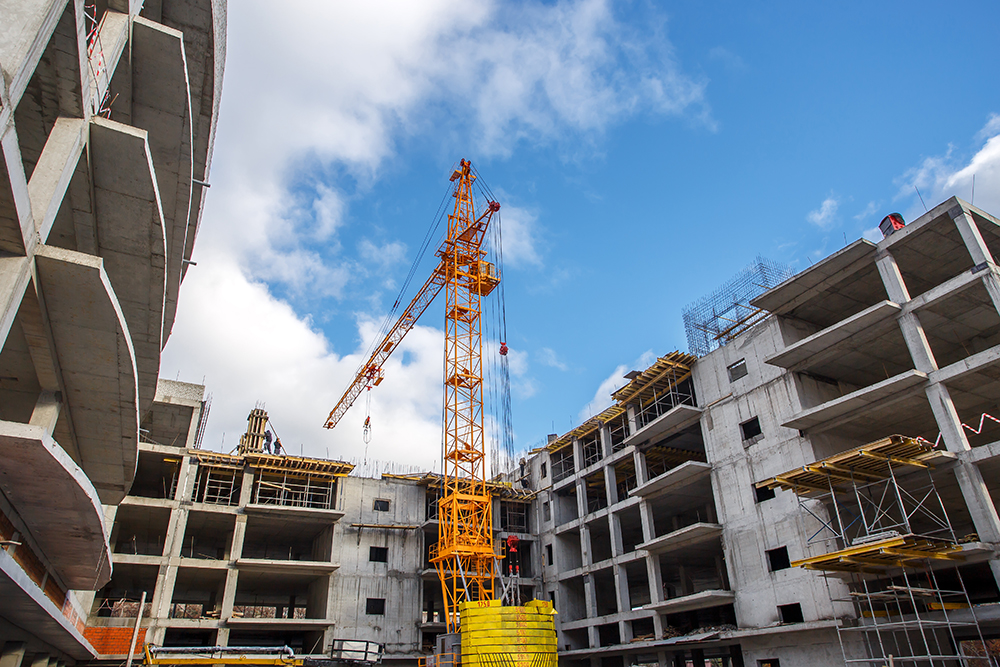Concrete’s Colossal Carbon Emissions

It’s no surprise that we rely on concrete – it’s everywhere you look. Even during the COVID-19 pandemic, there was only a 4% fall in cement production. Whilst cement allows us to build strong buildings and transport links, it is damaging the environment.
Cement Production
Firstly, it’s important to look at how much cement is actually being produced. Back in 1980, Europe and North America produced 40% of the world’s cement with annual production of 900 million tonnes. Compare that to now, where China and India account for 60% of the world’s cement production, producing a huge 2.6 billion tonnes annually. By 2030, it is predicted that this could rise to 4.8 billion tonnes annually.
Increased production creates many problems, most of which stem from the amount of carbon dioxide that cement releases – the cement industry alone generates 2.8bn tonnes of CO2 every year.
Carbon Chemicals & Concrete
The chemistry of concrete creates greenhouse gases. Let’s look at the process:
- When mixed with clay and heated to over 1,400°C, calcium carbonate in the limestone turns into calcium oxide
- Carbonate compound is released as carbon dioxide gas, and reacts with silica in the clay to form a complex mixture of silicates in a product called cement clinker
- This reacts with water to form a sticky mortar that hardens underwater. The polymerisation reaction binds both it and the other rocky materials in the mixture into a solid block
Each tonne of clinker results in a production of 800kg of carbon dioxide, excluding emissions used by power generation.
How could this be tackled? Hydrogen burning or electric heating could remove emissions from the energy inputs.
Looking to the Past for Solutions
Studies concluded in 2017 found that processes used back in the Roman Empire could be the missing puzzle piece. Researchers used x-rays to analyse 2,000 year old mortar in the supports of a pier in a small town in Italy, finding that the pier included volcanic rock and seawater. Not only did this harden the structure all those years ago, the seawater is continuing to harden it to this day.
The salt in the seawater and the volcanic ash created a second chemical reaction around the aluminium and silica hydrates structure, leading to hard fibres and plates growing in the mortar, acting as a reinforcement.
Using this as inspiration, chemists can find ways to reduce the amount of limestone used in the clinker, helping to reduce overall emissions.
Reducing Concrete’s Carbon
Recycling Concrete
Reuse, reduce, recycle is prominent in this day and age, but can we recycle concrete? Unfortunately it seems too challenging. Demolition of current structures would produce a variety of rubble sources, meaning that it would need to be organised taking time and money. What’s more, recycled materials could make structures less strong than its virgin material alternative.
Timber Alternatives
Timber could cut concrete use and carbon emissions in the construction of buildings. However, there is a reluctance to use timber after the Grenfell Tower fire in 2017.
What’s more, burning timber and disposing of it can release greenhouse gases such as methane, which has a worse effect than carbon dioxide.
Could Carbon Capture Be the Answer?
Carbon capture and storage during production could be the answer. Cement production uses a chemical reaction that produces a higher concentration of the gas found in the exhaust of gas turbines, making it possible to use cheaper and simpler methods to extract the carbon dioxide. However, a problem for any of the heat intensive industries is that carbon pricing will increase competition for these fuels, which will naturally force prices up.
In addition to this, if a market for carbon dioxide does not develop for synthetic fuels and chemicals, long term storage may prove to be uneconomic for cement makers.
Conclusion
Many things need to be taken into consideration when it comes to concrete and its alternatives, especially when you take into account that concrete’s emissions are much lower in comparison to the emissions generated in the building’s lifetime through heating and air conditioning.
Construction may be the last industry to move to renewable energy sources that do not generate carbon dioxide, but it’s something that needs to be considered nevertheless.


